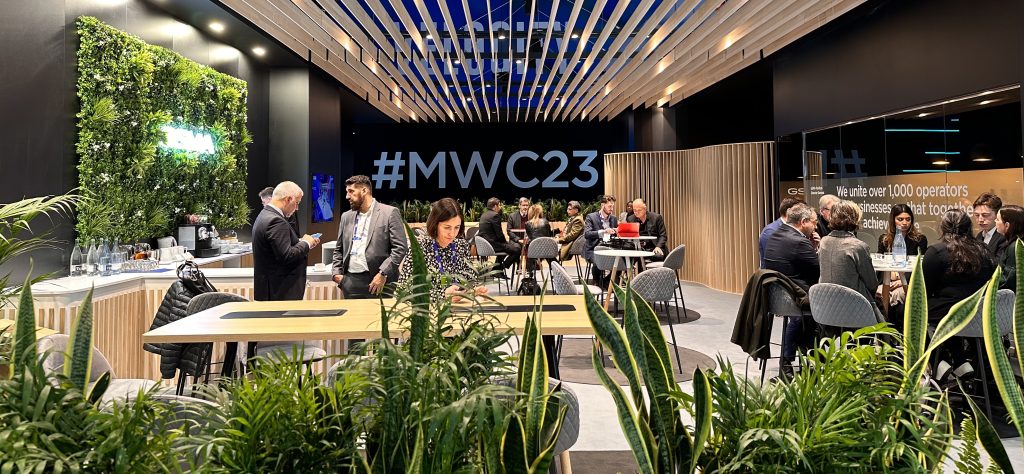
- Resources
- Blog
5G monetization with eSIM and iSIM
2022 has been a landmark year for eSIM technology, with significant adoption from OEMs and CSPs across consumer and IoT devices. iSIM, the integrated SIM – which moves eSIM functionality into silicon, is following fast with innovative products in volume production. Lets uncover the 5G monetization opportunities with eSIM and iSIM technologies.
Device innovation fuelling demand for eSIM
With awareness of the eSIM technology becoming mainstream in the consumer space and beyond, we look at some of the exciting developments that Kigen’s eSIM OS and iSIM OS have enabled OEM customers to bring innovative IoT products to market.
- Smart Labels: which enables an individual package to be tracked as well as a larger container or pallet across a range of transport methods;
- Tryfi dog collar: This smart collar acts as a GPS dog tracker and activity monitor;
- Motorola Defy Satellite Link: Enabling seamless coverage with 2-way messaging wherever you are using the power of satellite connectivity.
The future is integrated
In a recent article with IoT Now, Vincent Korstanje, CEO of Kigen, reflected on the journey of iSIM compared with its predecessors, stating that:
“It took 22 years for SIM and 12 years for eSIM to become mass market, OEM mandated technology in volume but within five years, iSIM products are coming to market. It’s particularly pleasing for us because Kigen was formed to make this a reality, and today, our ecosystem is thriving.”
Vincent Korstanje, CEO – Kigen
With products in the millions already, and with this figure only set to increase, according to Kaleido Intelligence forecasting, a staggering 300 million global iSIM shipments to be reached by 2027 further substantiates how iSIM is fast outpacing prior generations of SIM technology and innovation. Compared with its predecessors, the iSIM moves the SIM from a separate chip into a dedicated silicon area which sits alongside the microprocessor called a secure enclave or tamper-resistant element and/or cellular radio on a purpose-built system-on-chip (SoC). This offers protection against a broader set of security risks on the device whilst authenticating device ID and generated data.
This level of integration is good news for consolidation in the days of supply chain and component shortages; it also allows to build ultra-low power and ultra compact devices. We see these remarkably innovative products that can support the new service economy. We also simplified this disruptive idea with GSMA standards supporting eUICC and iSIM.
And how did we get to this point? From mere concept to reality. Let’s take a recap:
In 2018, Kigen, formally a part of ARM, took to the show floors of MWC to announce a disruptive concept centred on security and secure data, the iSIM.
The following year saw Kigen further pioneering the technology within ARM and to the outside world, demonstrating how it meets the security standard known with the traditional SIM and eSIM. It needed to be shown as a trusted, solid, secure platform that could be tested and standardised.
At MWC Barcelona 2019, Kigen was able to announce a formed partnership with Vodafone. Following this, pharmaceutical company, Bayer, used a joint iSIM solution from Kigen, Vodafone, Altair Semiconductor and Murata, for a Smart Label, that constantly monitors the status of its products and takes immediate action to protect its integrity, which demonstrated a new innovative IoT product coming to live through the technology.
The next two years saw Kigen seeding, educating and bringing the ecosystem together. Kigen separates from ARM and became a SoftBank Vision Fund company in 2021.
In 2022, iSIM technology momentum was stronger than ever, Kigen participated in several partner showcases. In October, Kigen launched the first iSIM Pioneers event, a unique and first-in-its-kind event that brought together key ecosystem players to demonstrate this momentum. This was an opportunity to showcase some of the product innovations enabled by the technology.
Indeed, it’s a credit to the innovative partnerships in our ecosystem that we have 8 of the most prominent module makers offering tremendous choice to OEMs, all the largest MNOs of three key continents and 15 of the leading MVNOs all publicly committed on iSIM.
Fast forward to 2023, and at MWC this year, we noted iSIM as a key talking point in the conversation around IoT Connectivity. Plans for a second iSIM Pioneers event are underway and the #FutureofSIM is really looking integrated. Kigen are pioneering alongside other ecosystem partners and with notable shifts in the value chain, it will become easier for OEMs to scale IoT.
We are at the stage where cellular module players and chipset makers are working together to accelerate ready-to-connect hardware to mass production. Integrators of cellular technology can put a cellular module with connectivity baked in through eSIM or iSIM and then launch a product, much like the Smart Label, Tryfi Dog Collar and Motorola Defy Satellite Link mentioned earlier in this blog.
In other areas of the ecosystem, the number of connectivity service providers or (MNOs and MVNOs) being enabled on eSIM or iSIM is really accelerating, notably in the IOT CSPs space.
5G Monetization for CSPs
In this video, Sean Kinney uncovers the 5G monetization opportunities with eSIM and iSIM technologies alongside Loic Bonvarlet, SVP of Product and Marketing at Kigen.
Amongst all the state-of-the-art mobile technology and telco innovation that surrounded us at MWC this year, we noted several trending topics, including 5G monetization. 5G is a new generation of cellular networks presenting opportunities for new revenue growth.
5G demand is contributing to 4x revenue growth that Kigen has seen and external forecasts such as Counterpoint’s show 20% YoY on cellular module growth. This is mainly thanks to 5G eSIM deployment in vehicle-to-vehicle and Massive IoT and fixed wireless access for broadband connectivity at home in countries skipping fiber or cable.
Advice from industry experts this year, including Kigen’s SVP Product and Marketing, Loic Bonvarlet, suggests that Communication Service Providers (CSP) should look beyond just selling connectivity to maximise revenues.
CSPs should shift their focus and respond quickly to opportunities presented by digitization, aided by exploring technologies that provide global connectivity and security. CSPs should revise their business models and expand offerings through value-added services, LPWAN support, or the number of connectivity profiles available on their eSIMs.
The customer base is vast and the opportunities are great – from billions of IoT devices spread globally; to gaming broadcasts from stadiums direct to user requiring high data bandwidth and performance. These differing use cases will challenge how their network is split, utilised and billed, but will be extremely beneficial if the right mix is achieved. Matt Hatton from Transforma Insights goes into detail on the various approaches and growing capabilities observed in the market today in his 2023 IoT CSP Benchmarking Report.
Security
As we begin to partner with more CSPs, we note a desire from them to invest in the applicative territory, for example on security. CSPs could consider the use of Kigen’s IoT SAFE, which provides hardware-backed security based on the eSIM or iSIM. Allowing you to offer an additional service as a CSP to attract or retain customers. Customers tell us that when security is bundled with connectivity, this is the strongest route to them getting service revenue.
Get in touch
The best is yet to come, but CSPs should be making decisions today. Want to uncover more about how eSIM and iSIM can aid 5G monetization? Our expert Team here at Kigen are here to help. Get in touch.


